Chapter 1, Part 18
One dynasty falls, another rises. One kingdom declines, another flourishes. It is one of many patterns that repeat in perpetuity over the course of the history of mankind. As the influence of the once mighty Buddhist kingdom of Bagan gradually waned, at the northern fringes of the Indian Plate to the west of Bagan – the tectonic plate that has been pushing the Eurasian Plate in the north, creating the Himalayas – a political dynasty emerged in the early 13th century. For more than five centuries, the dynasty – known as the Mallas – would shape the political landscape as well as the architectural and artistic styles of a region which today makes up the Kathmandu Valley.
* * *
On one Monday afternoon at the end of November, the old Boeing 737 we took from Kolkata in India began its descent. The mighty, snow-capped peaks of the Himalayas and the hilltops that seemed to be a few hundreds meters away from the plane reminded me that we were about to land in a no ordinary place, a place which several months prior to our arrival was hit by the same brute force that created its majestic landscape.
“Welcome to the birthplace of Lord Buddha” read a billboard along the corridor toward the arrival hall of Tribhuvan International Airport. Having traveled in southern India for a month I was mentally prepared for any surprises or challenges I might encounter upon arriving at Nepal’s sole international airport. However, to my surprise immigration was a bliss. Several self-service visa on arrival kiosks were installed and, most importantly, easy to use. The immigration officer was very friendly and welcoming, all was well, until we arrived at the baggage claim area. Chaotic is an understatement.
A few months before our trip to Nepal, another crisis – a man-made one – hit the country, very hard. In September 2015, the parliament passed a new constitution which had been put on negotiation table for years. The Madhesi people, an ethnic group within Nepal culturally related to the people from Indian northern states, protested the new constitution and, purportedly backed by India, staged a months-long blockade over the main trade route between the two countries. Fuel and medicines became scarce in Nepal shortly after, and prices skyrocketed. It was the last thing the Nepalese needed following the devastating earthquakes in April.
At the airport taxi counter a staff mentioned a price to me, and explained briefly about the fuel crisis. Bargaining really was out of question for us, understanding the dire situation the local people were facing. However, some tourists, we were told, unfortunately didn’t really care, and chose to complain about how much more expensive they had to pay to the face of people who had to buy gasoline at a price four times more expensive than how much they had to pay prior to the crisis, and a canister of LPG seven times the normal price, if they could find them at all at the black market. All while the number of foreign tourists visiting the country kept dwindling.
About half an hour later we arrived in Bhaktapur, our first destination in Nepal. Just before dark we arrived at our hotel, a multiple-story modest accommodation right at the corner of Taumadhi Square, one of Bhaktapur’s main squares. Then the power went out just as we were checking in, and unlike the regular power outages in India and Myanmar, we would soon learn that the fuel crisis meant hours of no electricity in Nepal, every single day.
Bhaktapur together with Kathmandu (Kantipur) and Patan (Lalitpur) were the centers of the political realm of the Mallas, and throughout their rule the three cities witnessed repeated union and split among contemporary Malla kings. From the rise of the dynasty until the 15th century, Bhaktapur was the royal seat of the kingdom, and many vestiges of this golden age of the ancient city managed to survive the conflicts and earthquakes in and around the valley over the course of centuries.
Dattatraya Square, the oldest of the three main squares of Bhaktapur, sat to the east of the other two, with the 15th-century Dattatraya Temple its landmark and focal point. Next to the temple was a monastery, decorated with exquisitely-carved peacock windows which were crafted a few decades after the completion of the temple.
Then the royal court shifted to Durbar Square where many impressive pagodas and shikharas (typical South Asian towering religious structures) were built, encircling a central, spacious square. In the front of the aptly named Palace of 55 Windows, an octagonal multi-story pavilion was easily overlooked by tourists for its relatively modest size in comparison with other structures nearby. But it is Chyasilin Mandap, a symbol of hope for the reconstruction of Nepal’s ancient heritage for the pavilion itself once collapsed following the 1934 earthquake which also destroyed many buildings around Durbar Square, hence the spacious square we see today.
The same earthquake also shook nearby Taumadhi Square, famous for its crown jewel which is also the tallest pagoda in Nepal: Nyatapola. Completed only within five months in the early 18th century, the temple’s ingenious design allowed it to withstand the destructive power of both the 1934 and 2015 earthquakes, sustaining only minor damages. The reason for building such a tall pagoda, however, was to tame the violent nature of Bhairab, a deity whose temple today stands right to the southeast of Nyatapola.
Despite the fuel crisis which led to electricity crisis, among other things, and having to live among the scars of last year’s earthquake – wooden beams propped up against leaning walls, bricks of fallen structures piled by the side of the road, missing temple struts, etc – the people of Bhaktapur continued their lives notwithstanding the difficult situation. Every morning vegetable seller occupied both sides of the road leading to Taumadhi Square; men and women made pots from clay and dried them in the sun at Pottery Square; local cooks and chefs kept making Juju Dhau (a richer, creamier version of yogurt) and serving some of the most delicious dishes we had ever tried in the country. Resilience was evident.
Click here for the full list of stories from the Spice Odyssey series.
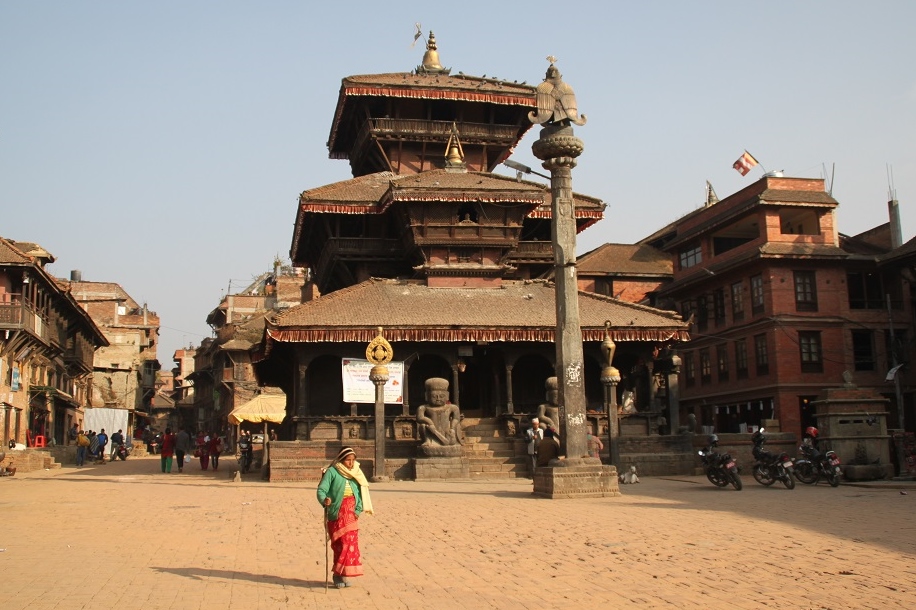
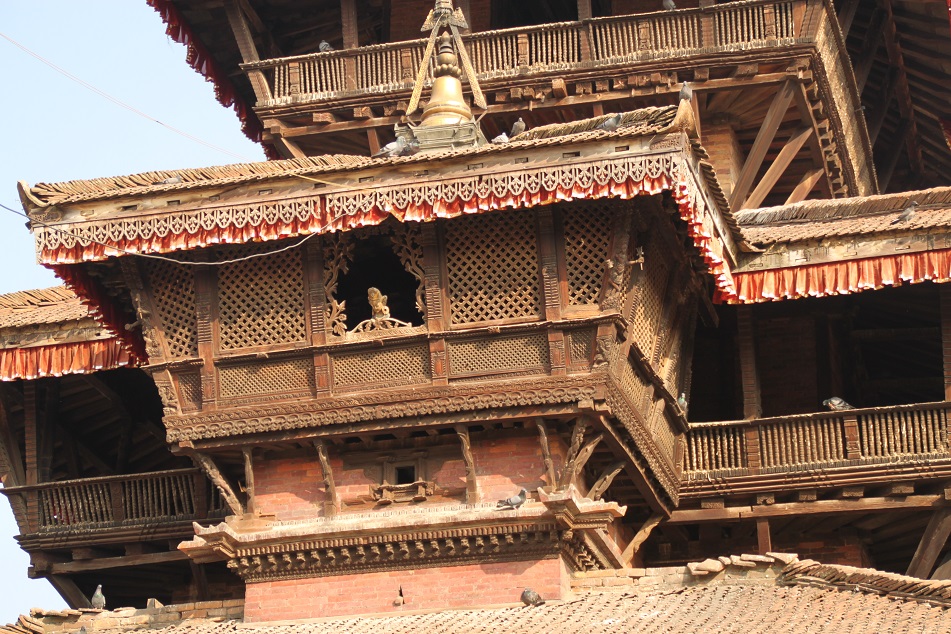
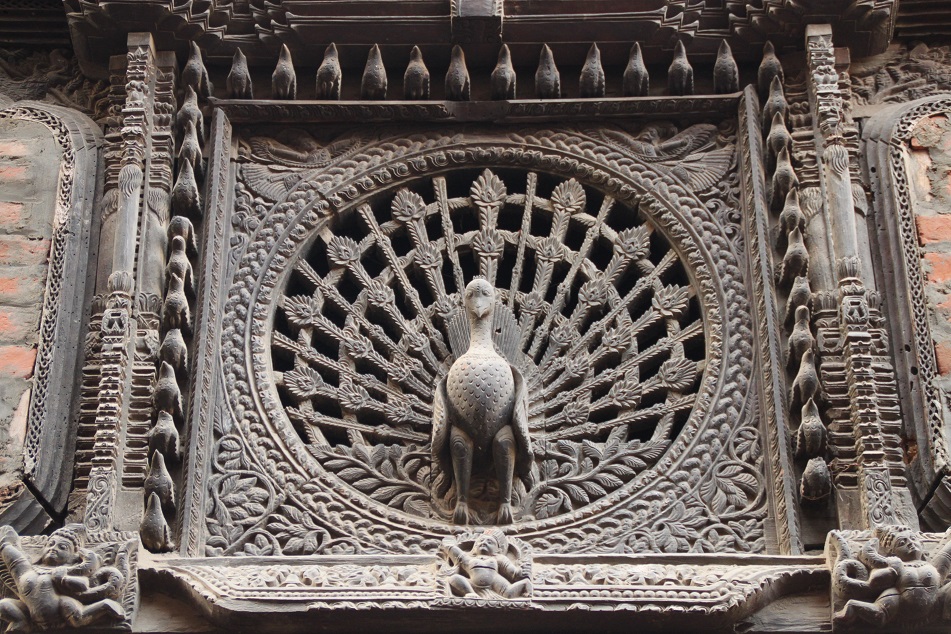
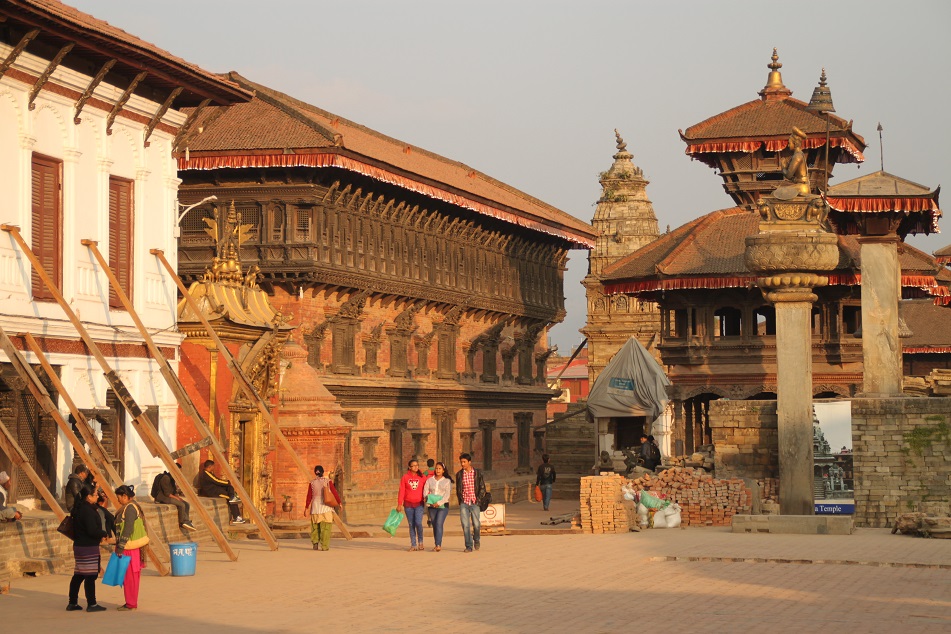
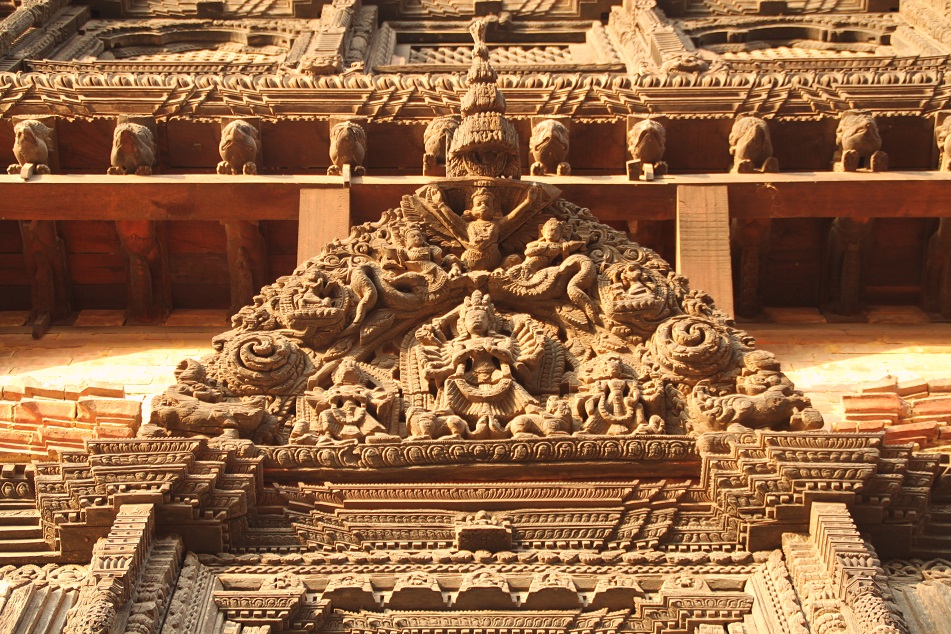
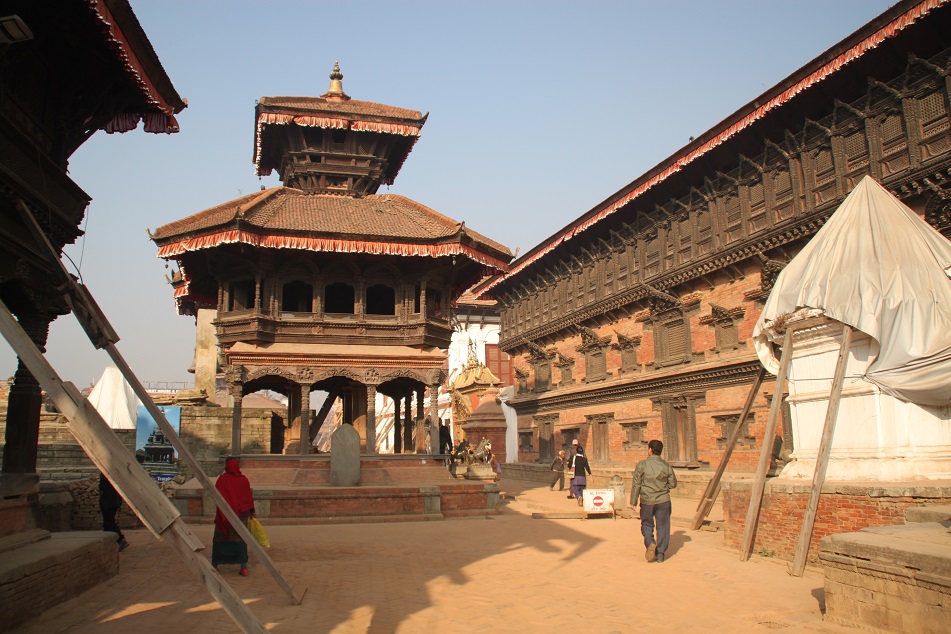
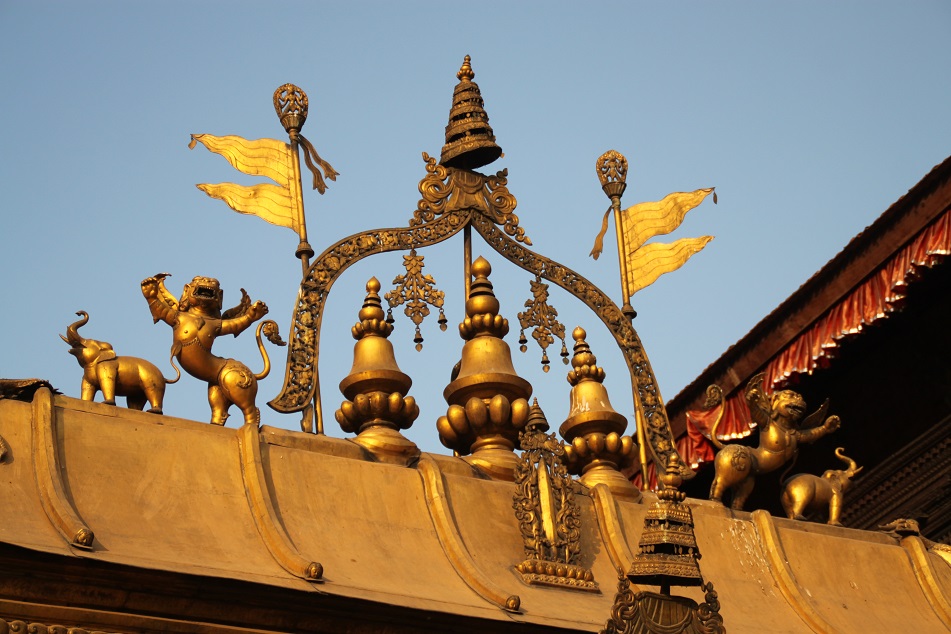
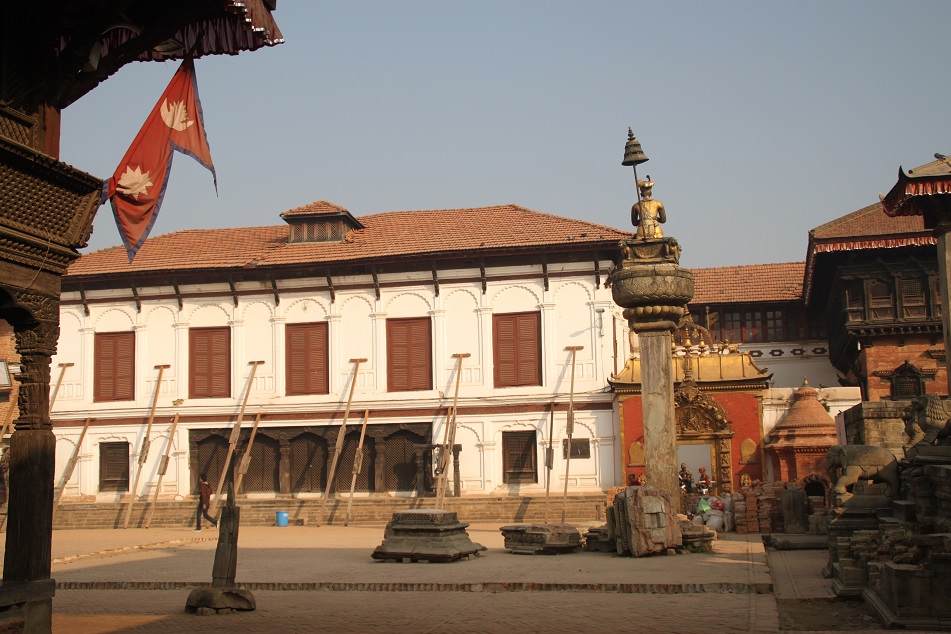
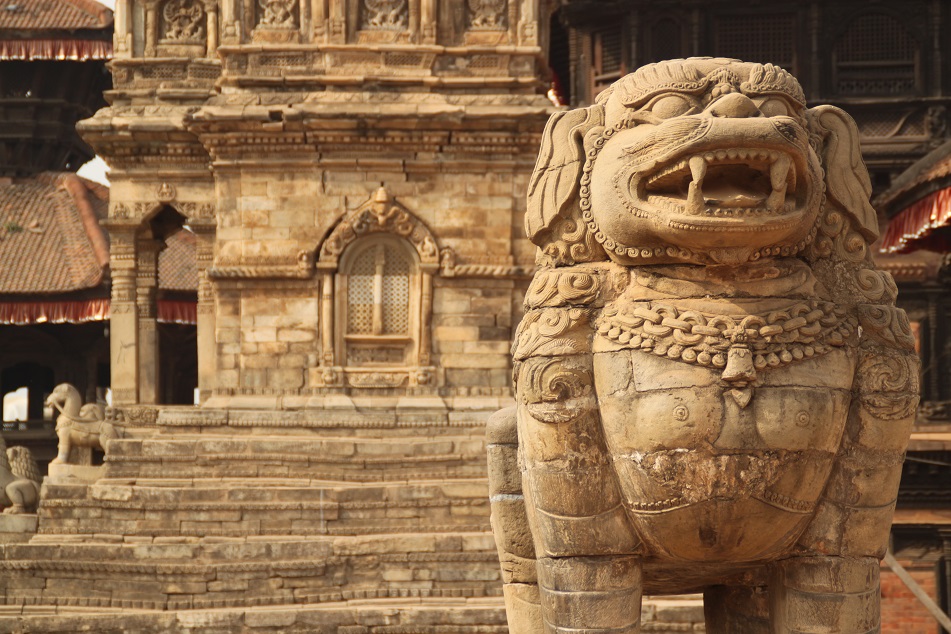
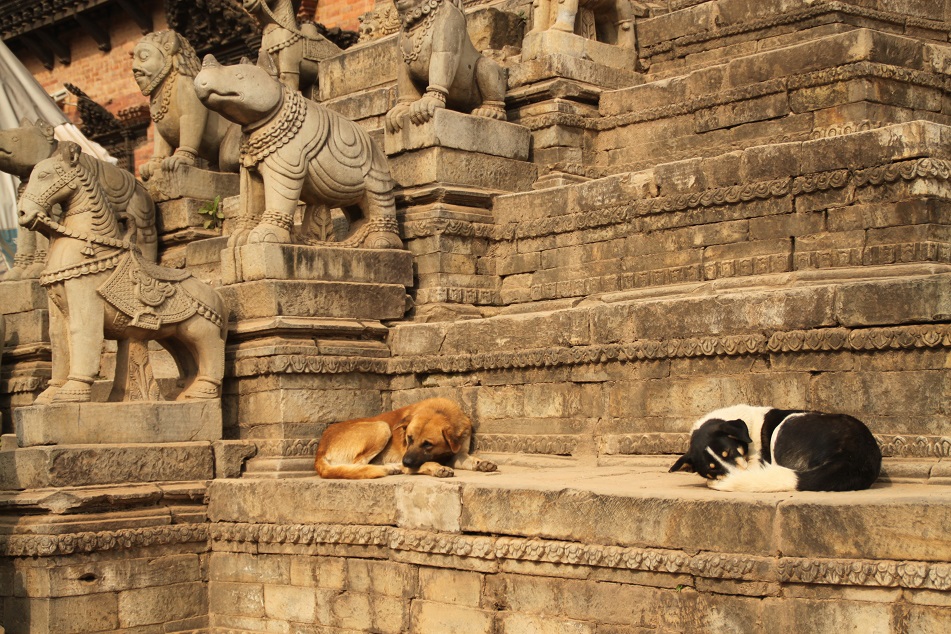
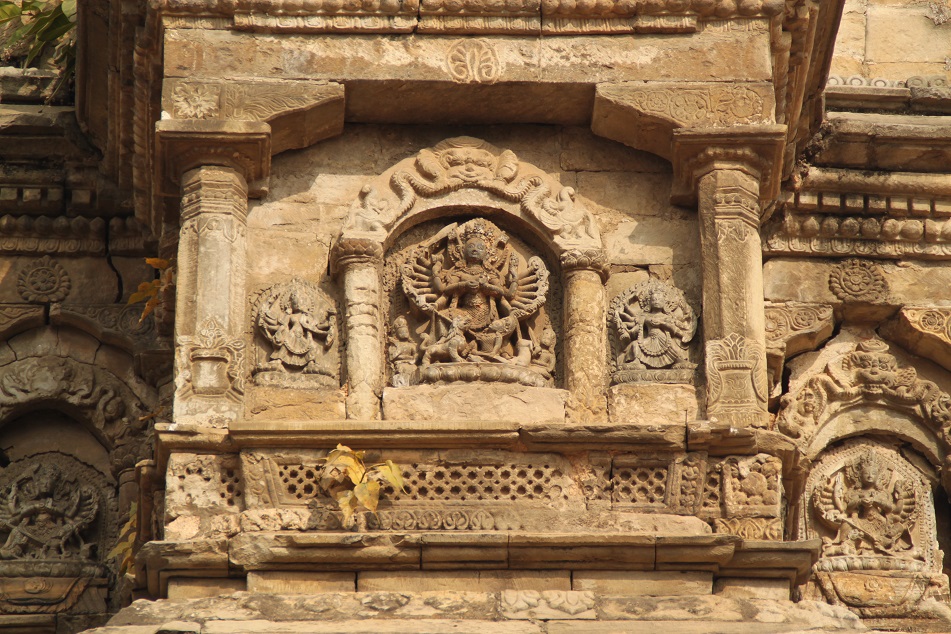
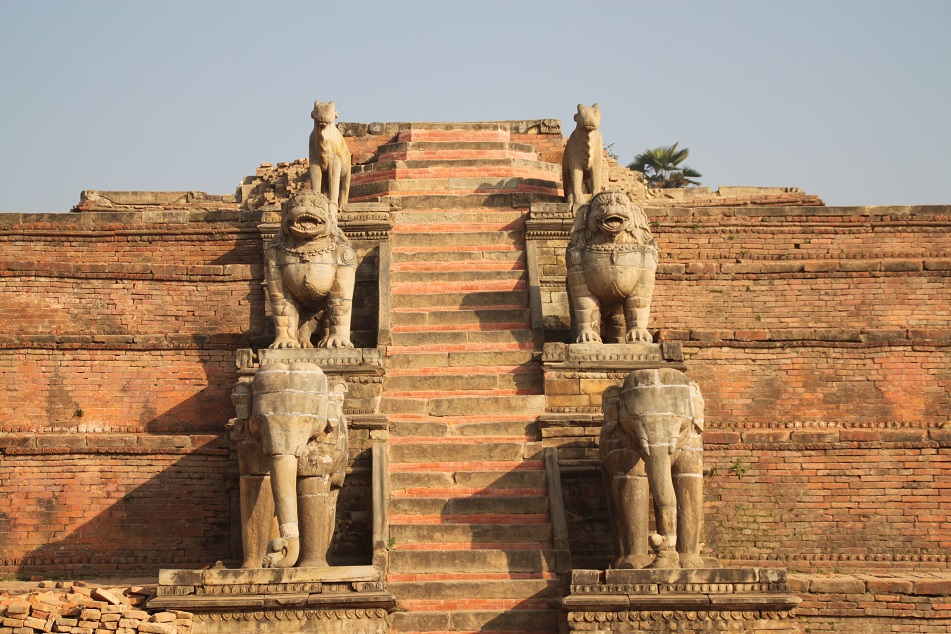
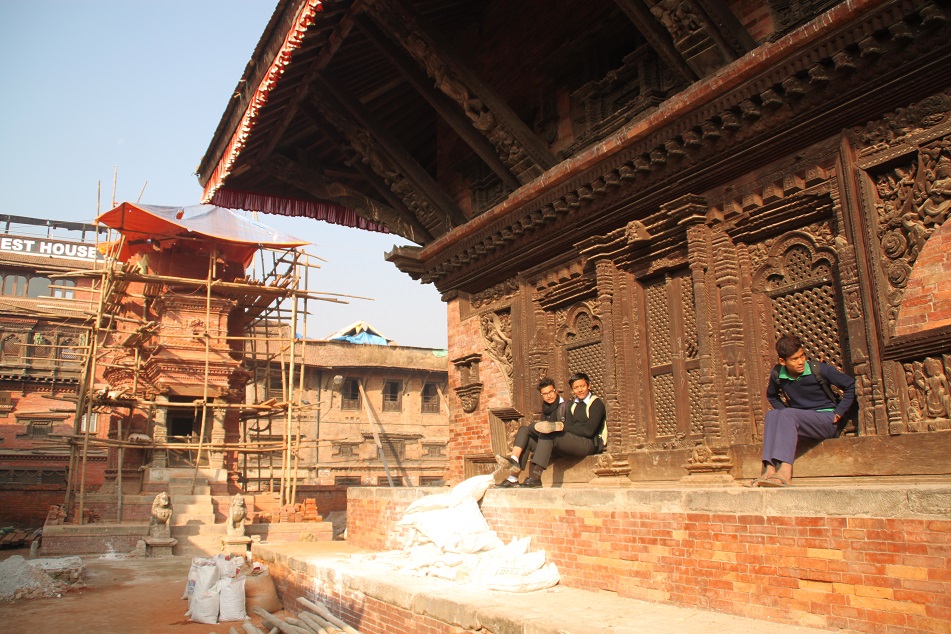

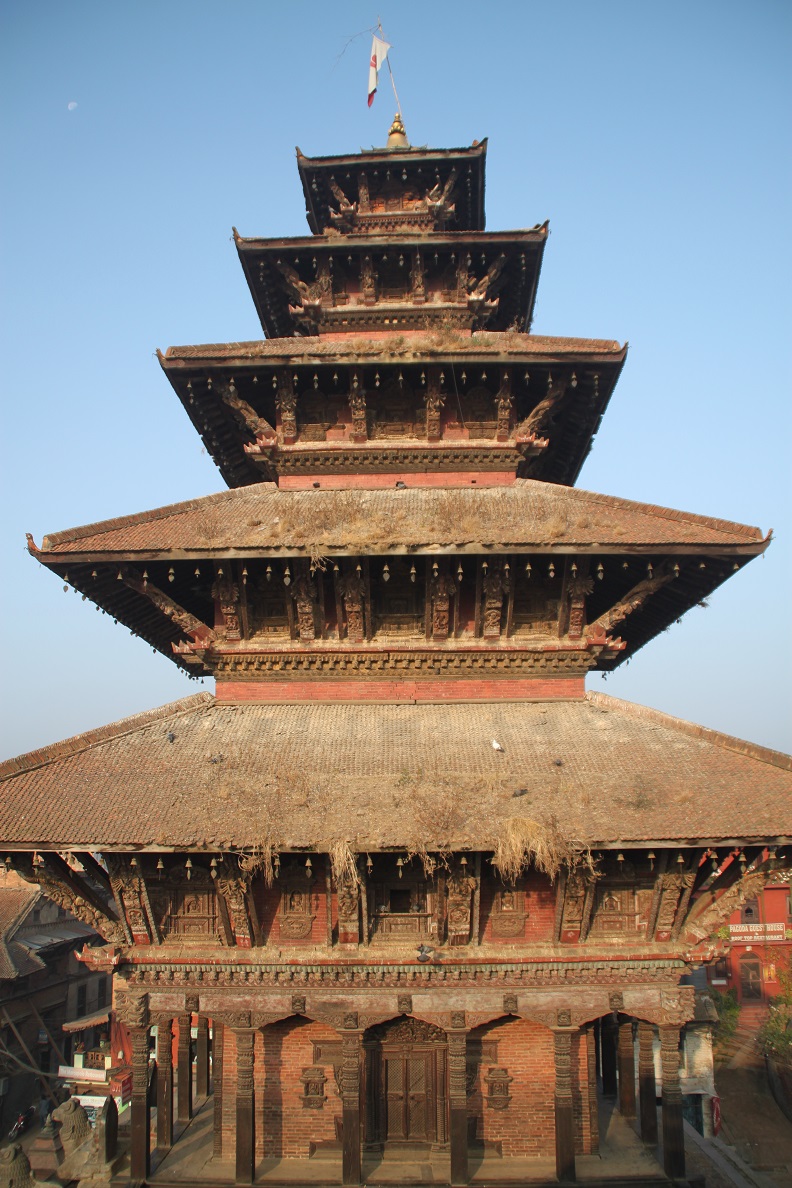

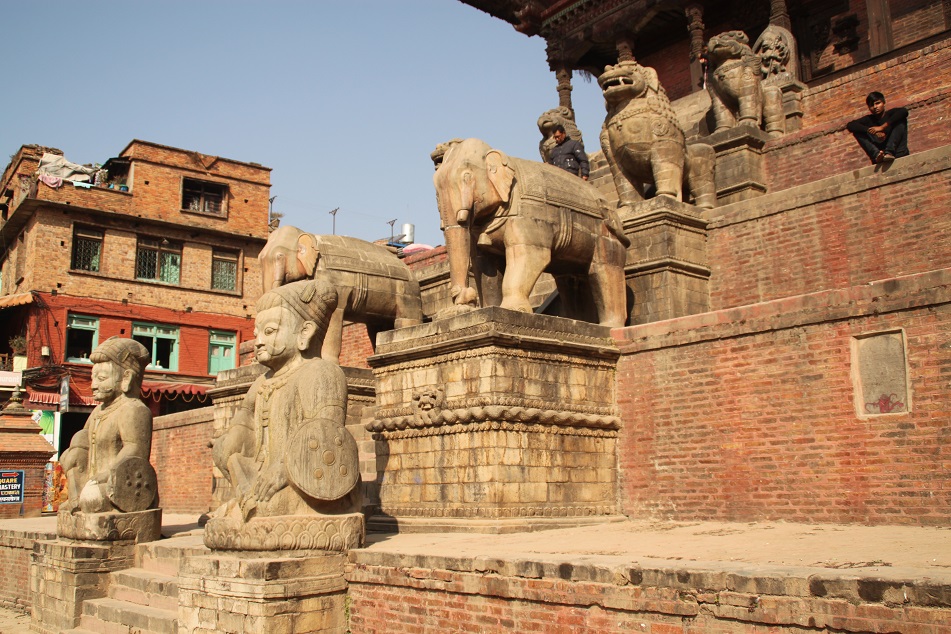

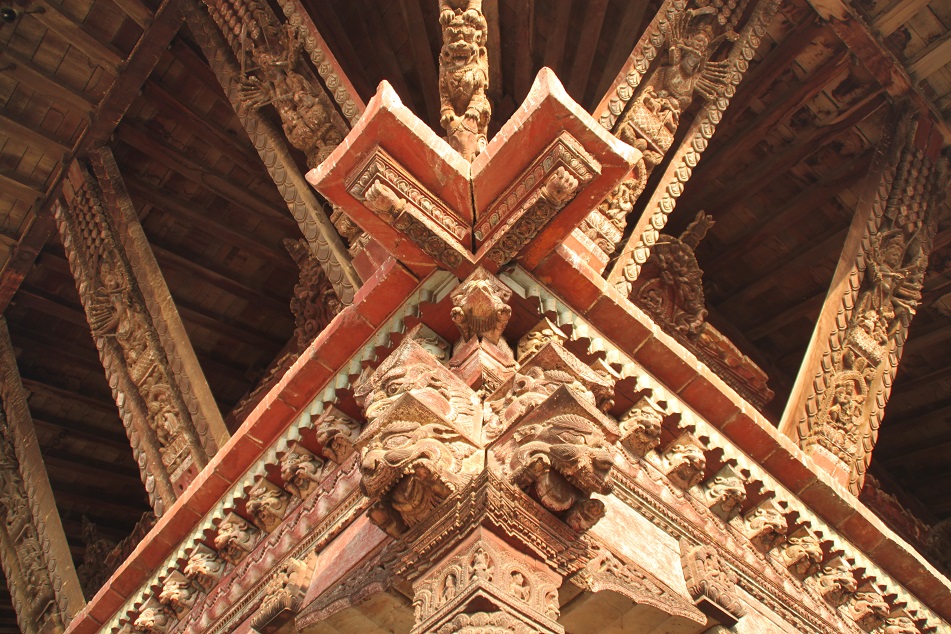
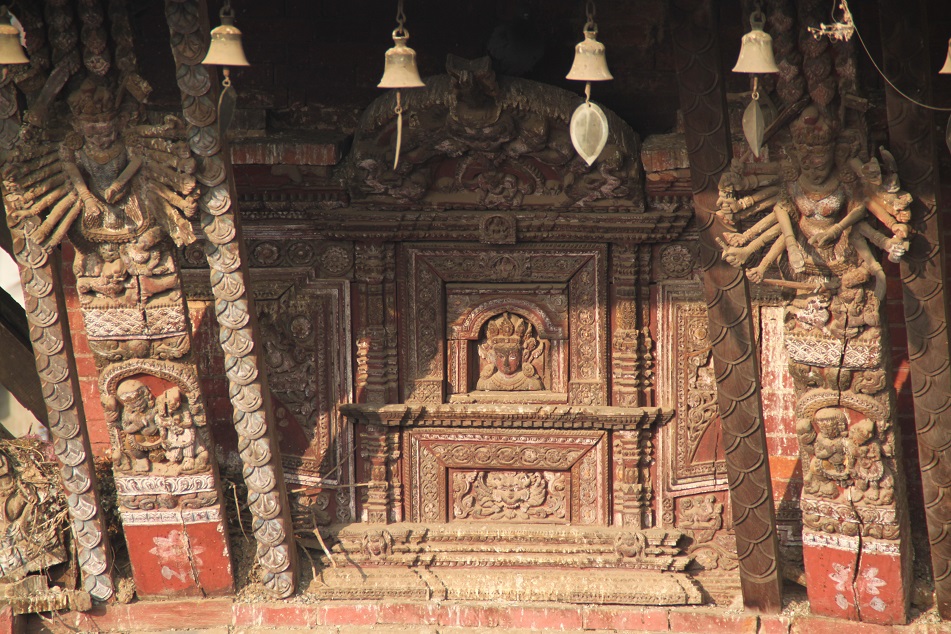
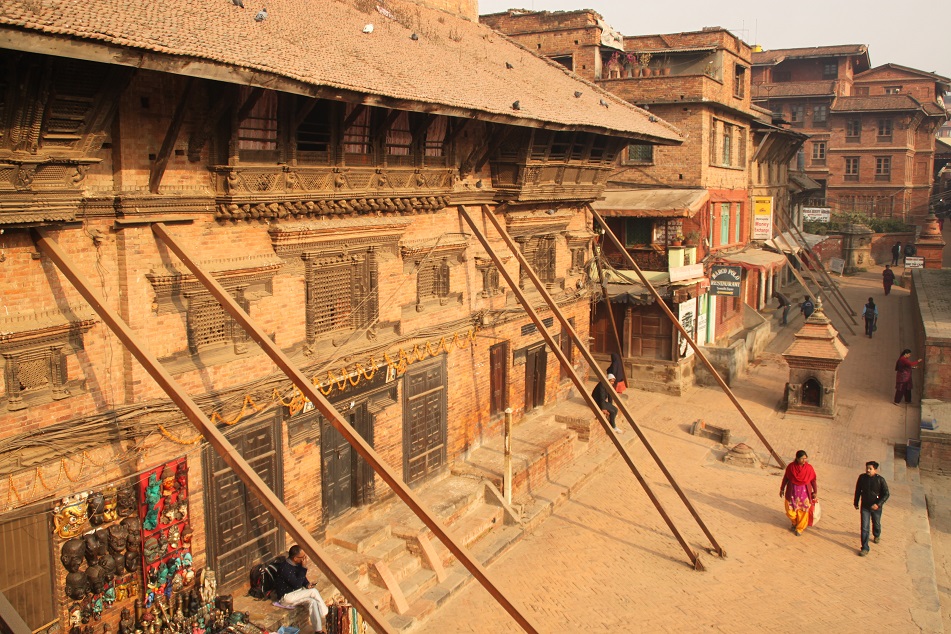
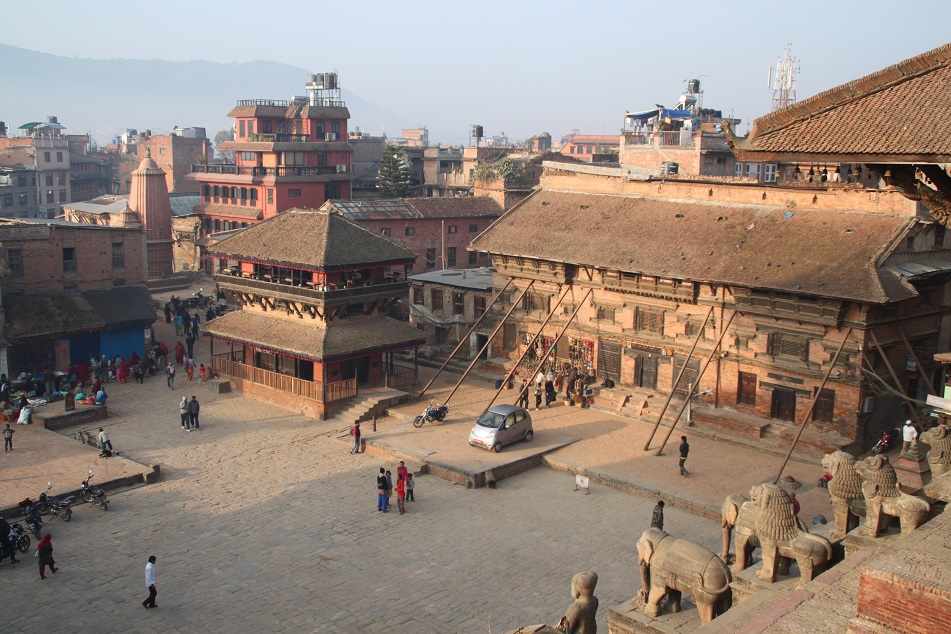
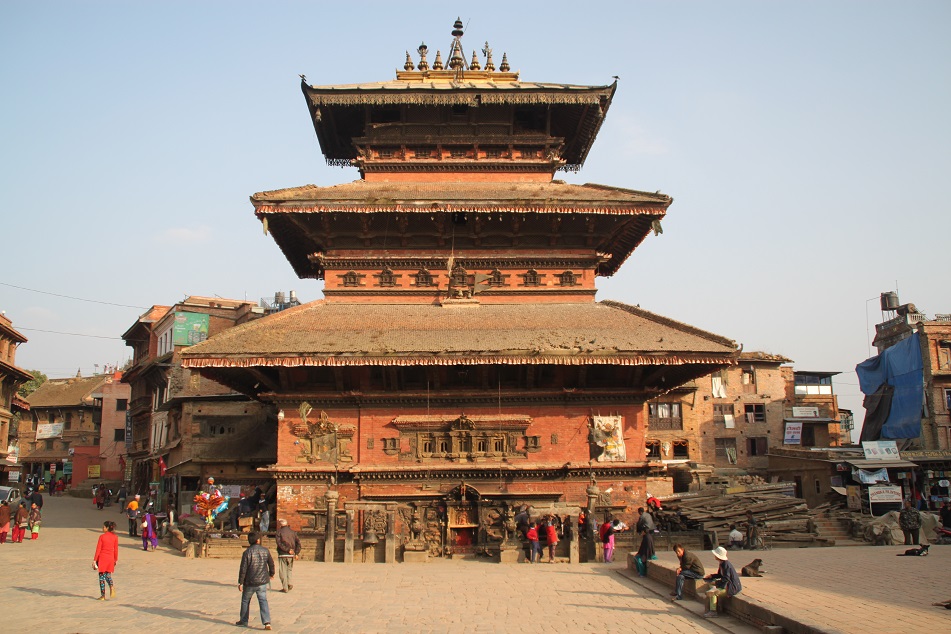
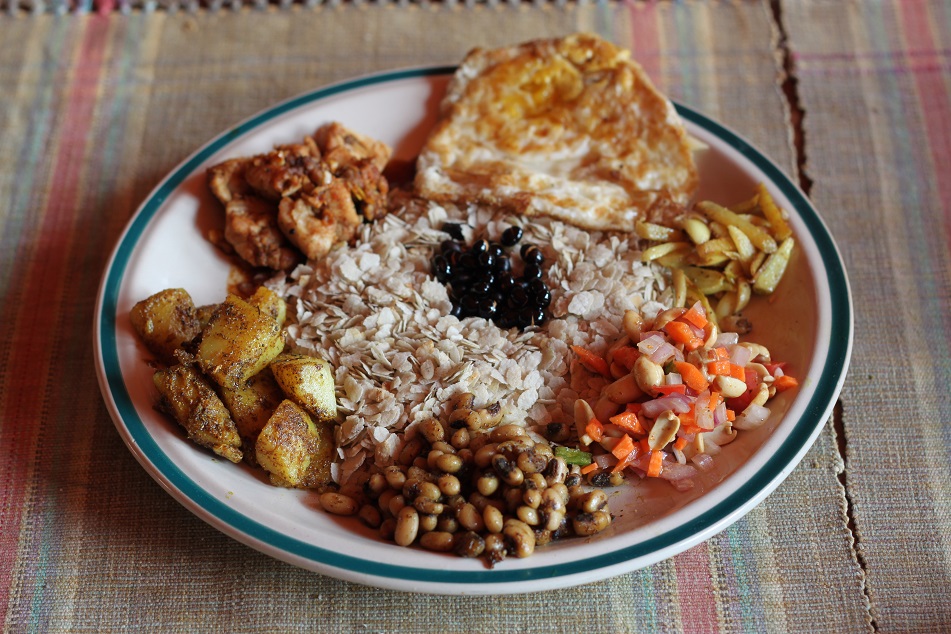
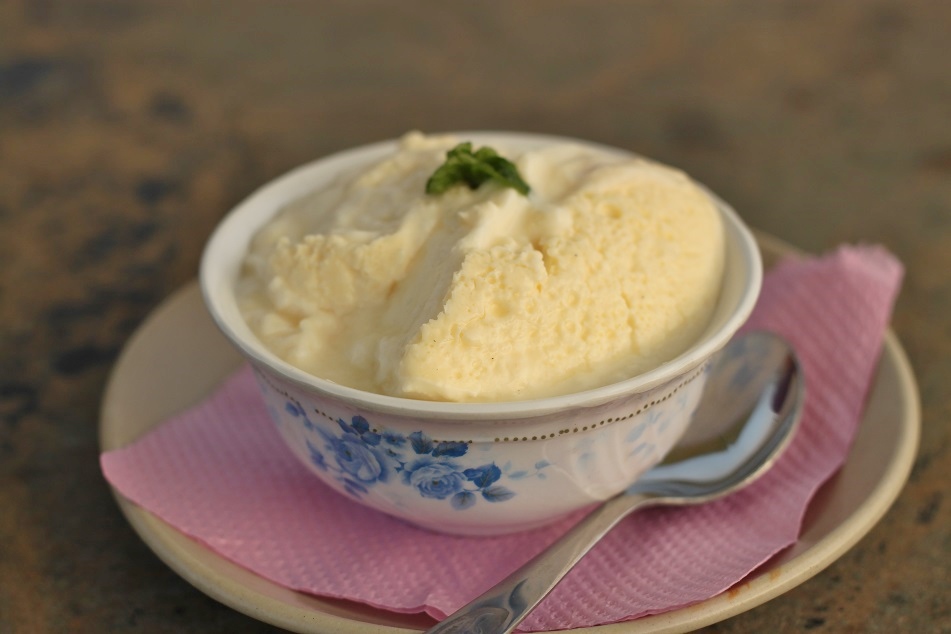

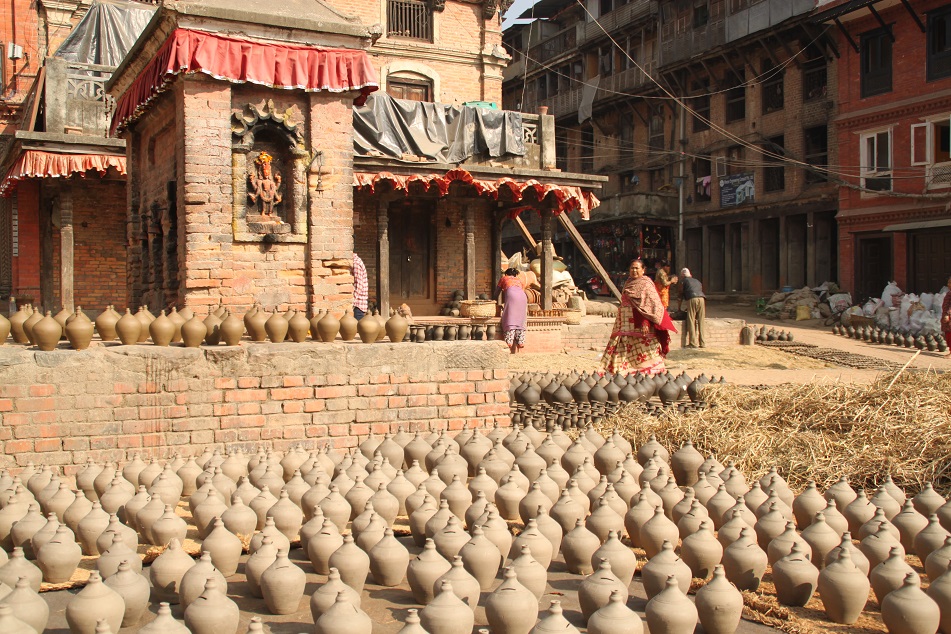
incrediblle india
LikeLiked by 3 people
Anu mas, Bhaktapur itu di Nepal, bukan di India. 🙂
LikeLiked by 2 people
owalah aku salah ya, habis aku nggak baca tulisan tulisan diatas, cuma liat liat foto fotonya yang menarik, okelah nanti aku baca (habisnya pakai bahasa Internasional sih)
LikeLike
Hehe, silakan dibaca kalau sempat ya. 🙂 Makasih sudah mampir blog saya.
LikeLike
Bhaktapur was my favourite place in Nepal – spending a few days there was the perfect way to kick off our time in the country. I loved the architecture, the food, and the sense of continuity we felt, as though we’d gone back 50-60 years just by walking the streets of Bhaktapur. It was encouraging to see how much had survived the recent earthquakes and how resilient the people were. Now that the fuel crisis is finally over, I hope the Nepalese can rebuild their lives (and homes) in earnest.
LikeLiked by 3 people
It was a good decision to stay for a few days in Bhaktapur, instead of just going there on a day trip from Kathmandu. I still remember how beautiful Nyatapola was in the morning when I saw it from our hotel’s window. I loved exploring its ancient alleys, I loved Juju Dhau, I loved the intricate carvings at Nyatapola, so many things I loved during our stay in the city. I was very relieved when the blockade was officially over, and now it’s up to the politicians to rebuild the country.
LikeLiked by 2 people
Thank you Bama for sharing the beautiful photos of Bhaktapur, the memorable city. And the lovely Dattatreya as well… and the peacock window… pottery square, the nearest square to my hotel… aaargh allllll…
*Aduh dimana yaaa pintukemanasaja mau langsung pake biar bisa muncul di dattatreya…
LikeLiked by 3 people
You’re welcome, mbak. *searching Yellow Pages for Doraemon’s number 😀
Tapi Bhaktapur memang cantik banget, meskipun di sana sini ‘luka’ bekas gempa bumi masih kelihatan. Saya kangen banget sama Juju Dhau, duh gak ada yang jual ya di sini. 🙂
LikeLiked by 2 people
Bama as always I felt as I have just read a chapter in a most beautiful book you are writing. I love the way you have included the food photos. Always an important part of the travel for me. How about the dogs. In our cycling adventures we have found the national temperament of dogs to be quite different. these two look very relaxed.
LikeLiked by 1 person
I can’t thank you enough for all the encouragement. Really appreciate it! Oh how I loved Nepalese dishes. They were so well-balanced despite the many spices used, and Juju Dhau… I love yogurt but it was much much better than yogurt — so rich and creamy. When we were already in Kathmandu James even had this idea of going back to Bhaktapur just to have the curd again before leaving the country. As for the dogs, I didn’t really pay attention to the ones in Nepal, except those who were caught sleeping at a temple. 🙂
LikeLiked by 1 person
I love the almost return trip for food. Makes me smile. Well if you didn’t notice the dogs they likely weren’t trying to eat your ankles. Good pups! 🙂
LikeLiked by 1 person
I have to admit that I was really tempted. 🙂 Ha! that’s true. I don’t recall any dogs trying to eat my ankles throughout my six-month trip.
LikeLiked by 1 person
Excellent to hear about the lack of ankle biting. 🙂
LikeLiked by 2 people
Absolutely exquisite photos! This is an area of the world I haven’t traveled– but I feel I have been there vicariously with you. Thank you!
LikeLiked by 1 person
Thank you, Ann. I’m glad this post did that to you, but I do hope one day you’ll visit Nepal too. It’s a beautiful and fascinating country.
LikeLike
Oh Nepal! I’ve always wanted to go there. A good friend of mine is from Nepal and she has always offered me to come and see her country, I might do just that one day.
LikeLiked by 1 person
After traveling for a month in India, Nepal was such a nice respite. I think you would enjoy the country as much as I did, Aggy.
LikeLike
You have described the beauty of Bhaktapur so well. The architectural brilliance behind the Nyatapole is awe-inspiring. It is a shame that we are economically Thanks fo
LikeLiked by 1 person
(Excuse me, the previous comment got published before it was completed)- We may have poor economic status but we have rich cultural and natural heritage. Thank you for sharing the story on Bhaktapur.
LikeLiked by 1 person
Hi Ankit (or should I call you Sandeept?). Indeed, despite the challenging economic condition, Nepalese are such kind people. The things I enjoyed the most during my three-week stay in Nepal were the food, the rich heritage (those wood carvings!), and of course the people. Thank you for reading.
LikeLiked by 1 person
You may call me either Ankit or Sandeept- whichever name you feel easier.
We Nepalese are simple people. There are problems but there are also prospects. Tourism, for example. A little bit stable politics and we can improve our economy as well.
LikeLiked by 2 people
Glad to see that kind of optimism. I wish to return to Nepal one day.
LikeLiked by 1 person
Thank you.
LikeLiked by 1 person
You’re welcome.
LikeLike
Really beautiful pictures!
LikeLiked by 2 people
Thank you, Lizzy. Glad you enjoyed them.
LikeLiked by 1 person
wow, glad to see bhaktapur in good condition. thanks for this post!
LikeLiked by 1 person
You’re welcome, Kattrinna. It is understandable if you thought Bhaktapur was reduced to rubble following the major earthquakes. But as usual, the media does not always cover everything.
LikeLike
Reblogged this on milamoki and commented:
Amazing.
LikeLiked by 1 person
Thank you for the reblog!
LikeLike
What a masterpiece you paint here Bama ~ both with your words and in your photos. I just walked through Bhaktapur a couple weeks ago and still can feel its charm. Your title of this post is also very apt, The Resilient. You share pieces of history of this place I did not know, yet walking through the streets could definitely feel and sense. The buildings and architecture is was astounds me most about this place, and add in the great Nepalese people, the hospitality and food ~ it is a slice of heaven on Earth. So happy to have read and found this post today! Cheers to a great weekend.
LikeLiked by 2 people
Randall, thank you so much. It means a lot when someone like you said that. A slice of heaven on Earth Bhaktapur really is. There was this magical ambiance when I explored its streets, especially early in the morning or late in the afternoon. The way the sun shone over the ancient temples created this unforgettable sight before my eyes. But it was the smiles of the locals that won my heart on my first night in the ancient town. Thanks for sharing your experience and thoughts, Randall. And have a great weekend too!
LikeLike
I was glad to read in James’ comment that the fuel crisis is over. Honestly when I read about the tourists complaining I wanted to go there and explain to them! And then get a taxi without haggling! Don and I do that quite a lot actually. No matter the charge it always works out to be not much for us so we just pay it. Bhaktapur sounds, and looks wonderful. Your post encourages me to visit. Nepal has long been on the list so I imagine we’ll get there one day. I wonder about the meaning of the ‘pur’ ending of place names – it’s very common throughout northern India, and Nepal also it seems (Jaipur, Jodhpur, etc). In West Australia there are hundreds of place names ending in up (e.g. Kojonup) and we discovered up is the local Aboriginal name for ‘place’.
Alison
LikeLiked by 1 person
It really was a big relief when the blockade was over. When we were there fuel was getting hard to find, a lot of hospitals were running out of supplies, and power outages lasted longer. James and I also rarely haggle when we travel. When we think the price is still reasonable given the circumstances, we will take it. I think you would love Nepal, Alison. The history, the culture, the exquisite architecture, it is such a fascinating country. As for ‘pur’, it’s from Sanskrit ‘pura’ which means city. Singapura (Singapore), Jayapura (a city in eastern Indonesia), and Anuradhapura (an ancient city in Sri Lanka) are some of the cities named in this fashion. In Bali, however, pura means temple compound.
LikeLiked by 2 people
Bama, this was a really nice connection between your recent series on Bagan and what began to rise in Nepal afterward. I loved your photos of Bhaktapur and the history you always provide alongside them, and it was nice to see that the city looks …. well, halfway decent. I know it was not as badly damaged as people thought initially, but it is still frustrating to see that the clean-up and rebuilding are happening so slowly. Finally, I had to smile as I read about your Tribhuvan airport chaos; is there a crazier place than that baggage claim area? I thought I was in a wrestling contest for a while there!
LikeLiked by 1 person
Thanks Lex. Learning the history about those ancient places in the region makes me realize that history keeps repeating itself. When a kingdom/empire falls, another rises. Signs of destruction were indeed evident in Bhaktapur, but the city is not as devastated as one might think based on the images shown on TV. Rebuilding the ancient temples and shrines would take years, even decades. But I have a reason to be optimistic after reading this article: http://www.lonelyplanet.com/news/2016/04/25/year-traditional-artisans-leading-effort-restore-nepals-earthquake-damaged-temples/
Oh I had to wrestle too to get my luggage at the baggage claim area! And there was this confusion as to which belt the people from our flight should claim their luggage.
LikeLiked by 2 people
Ah, yes, the belt confusion! That added a good 45 minutes to my luggage retrieval! Love KTM anyway!
LikeLiked by 1 person
I loved everything about Nepal except the airport. The night we left Kathmandu, after going through the X-ray machine the officer asked me and James to unload our bags! He suspected some of the items we bought in the country (note book, honey, etc) had marijuana in them. He opened the plastic wrap of a book I bought and sniffed it. After making sure no forbidden substance was found in both of our bags he said we were good to go. But we spent a good amount of time afterward putting everything back into our bags. That won’t deter me from coming back though.
LikeLiked by 1 person
Thanks for sharing this great commentary and photos. Such a positive read, and a great take on Bhaktapur. I particularly enjoyed this!
LikeLiked by 1 person
You’re welcome, and thank you for reading. It was very encouraging to see the resilience in Bhaktapur, and I hope the city can start rebuilding those ancient temples soon.
LikeLike
This is a beautiful post. I’d never heard of Bhaktapur before you and James wrote about it, and now I really want to go. The light is very beautiful in the photos. I hope the people can have some relief from the various disasters (both manmade and natural) that have hit them lately.
LikeLiked by 1 person
Thanks Jeff. Hey, Kathmandu is not that far from Bangkok and there are direct flights connecting both cities. Bhaktapur in the morning was truly enchanting with the temples bathed in soft orange hue. You should go, Jeff, and all the ancient cities in the Kathmandu valley are great for architecture and street photography. I really hope by now the country has started rebuilding and people’s lives have returned to some sort of normalcy.
LikeLike
How beautiful place
Lovely words
Wonderful pics
Great history
Greater visions
It was like walking the nooks and corners of Bhaktapur with ur each magical words!
Very well written n explored!
Cheers to beautiful Earth!
Have a nice day!
: )
LikeLike
Thank you! Bhaktapur is one of those places which cast a spell on everyone who visits. Cheers to our beautiful planet, and enjoy your day too!
LikeLiked by 1 person
: )
Yeah! It is!
Keep smiling n
Keep writing!
LikeLike
Keep writing too!
LikeLiked by 1 person
yeah! : )) will always : d
Thanks Bama : )
LikeLike
That peacock window is very impressive
LikeLike
And what makes it even more impressive is its age. It’s quite rare to find wood carvings which survive through centuries.
LikeLike
Great post, Bama! It’s pretty amazing how some temples remain relatively undisturbed while others were completely shaken down. Sad to see so many of the buildings propped up, too… for the foreseeable future, I would guess? But life goes on… and the pottery still gets produced as beautifully as it ever was. Human spirit is incredibly resilient.
LikeLike
Thanks Kelly. Nyatapola really amazed me, not only because of its intricate carvings, but also the fact that it withstood two major earthquakes centuries after its completion without suffering any major damage. Truly an engineering marvel of its time. I’m sure sooner of later reconstruction will be in full swing — local artisans will work in earnest to recreate the beautiful carvings damaged by last year’s earthquakes and engineers will start rebuilding the temples, one brick at a time. Human spirit is indeed incredibly resilient.
LikeLiked by 1 person
I always enjoy the pictures you post about the food in those remote places, I would love to try those dishes ☺
LikeLike
Thanks Liz. I really loved Nepalese food for its bold but balanced flavors. You should try it! 🙂
LikeLiked by 1 person
Pingback: Patan the Beautiful | What an Amazing World!
Pingback: Kathmandu the Eclectic | What an Amazing World!
Pingback: Pokhara: Beyond the Hiking Trails | What an Amazing World!
Mas Bama, lhaa aku jadi komen disini, tadinya aku lihat kuil Siddhi Laxmi di Blog Mas James, yang masih berdiri… Aku langsung error banget, karena pas bulan April 2017 pas habis trekking ke Annapurna, aku sempatin lagi ke Bhaktapur dan lihat udah gak ada tuh Kuil Siddhi Laxmi, tinggal pelatarannya yang bertingkat dengan patung-patung hewan (tempat bobonya anjing-anjing hehe) Padahal aku tahu pasti kuil ini sempat bertahan dari gempa April. Buktinya dari foto mas Bama dan mas James masih berdiri kan? Padahal kuil itu bagiku bagus banget dengan detailnya. Mungkin secara struktur gak memungkinkan ya makanya lebih baik dirubuhkan 😦
LikeLike
Iya betul mbak, Kuil Siddhi Laxmi sekarang sudah tidak ada. Tapi mungkin memang sengaja sih, sebagai bagian dari proses rekonstruksi yang pasti memakan waktu tahunan. Seingat saya dulu Borobudur pun sempat dibongkar batu demi batu untuk kemudian disusun ulang setelah sistem drainase dan penguat modern dipasang. Semoga itu yang terjadi sama Kuil Siddhi Laxmi.
LikeLike